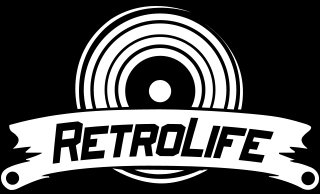Retrolife stocks a range of record players, speakers, and turntables. So we thought our blog post on how to diagnose and fix a record player could be useful for our customers. You don’t need any special skills to take care of your record player, but you will need a screwdriver.
Why Is My Record Player Not Spinning?
Record players will stop spinning for a number of reasons and will vary on the model, for example, record players with direct drive turntables or with a belt drive turntable. Common reasons include:
The Arm Is Not Reset
One common problem can be that the arm has not been reset. This is a simple and easy to fix issue. Most manual record players have a tone arm which will need to be pushed back into the reset position for it to work properly. If it is not reset, the player will not spin. However, if the tonearm is not pushed back far enough, simply lift it and move it toward the right hand side. You’ll hear a clicking sound to indicate the tonearm has been reset. Always make sure you reset the tonearm before you start playing a new record to avoid this issue.
Problems With The Belt
If your turntable has a belt drive, it is possible that the belt may have become loose or crumbled away. When the belt is not in its proper place, or is damaged, the platter stops spinning. However, if the belt is just loose or out of place, you can fix this problem by repositioning or tightening the belt. But if the belt has completely withered away, you will have to buy a new one, since it is not possible for a belt drive record player to function properly without one.
But regular maintenance is the best way to prevent such issues. Keeping the appliance clean and free from debris is a good precautionary measure. Regular upkeep and oiling also help prolong a record player’s life. Our Retrolife Record Player Cleaning Kit is therefore recommended when purchasing a record player, to keep it as clean as possible.
How To Fix A Record Player That Spins Too Slow
Sometimes the problem is your record player is spinning too slowly, rather than not at all. This will distort the sound, so it’s something you want to fix. The good news is that it’s usually a simple fix. Your best bet is to begin with the easiest solutions and work your way up. And the easiest of all is a simple cleaning and routine maintenance.
Cleaning And Maintenance
Sometimes a platter not rotating at the correct speed is simply due to dirt holding it back or too much friction. That’s why your first step should be a thorough cleaning of the turntable along with some additional lubrication. Once you’ve cleaned everything, add a few drops of oil on the motor shaft and on the area where the spindle enters the housing. Use twenty weight synthetic oil. If cleaning and lubrication has not solved the problem, it is time to take a look at the belt.
Adjust Or Replace The Belt
The first thing you need to do is make sure the belt is not rubbing against another part of the record player. If this is not the case, it could be that the belt has stretched out a bit. Whilst it is not uncommon for the belt to stretch a few millimetres, it can be enough to slow down the turntable. If this is the case, you will need to replace the belt. But first, you could try shrinking it back down.
The best way to achieve this is to simply boil some water, then turn off the stove and put the belt in the hot water. Let is soak for 4-8 minutes, before removing. It should have shrunk back to its original size. But if the belt is not stretched too much, you could try putting some talc on the bets and the pulley. This will increase the friction, reduce slippage, and also brings the belt in closer contact with the pulley.
Fine-Tuning Adjustments
If nothing else has fixed your speed issue, you may need to make some fine-tuning adjustments to the turntable motor. To do this you’ll need the manual for your model. If you no longer have it, manuals are often available on the manufacturers’ website. But if you can’t get your hand on any type of instruction manual, you’ll need to locate the adjustment screws on your own. Two common locations are beneath the platter and on the underside of the record player itself. Turning these screws clockwise speeds up the platter. Turning them counterclockwise slows it down. Make sure the unit is completely level before making any adjustments. This process is trial and error. Make small adjustments and test. You can test by listening, but it would probably be more accurate to use a stroboscopic disc to check the rotation speed.
Tips To Keep Your Record Player Spinning
To maintain optimal performance of your vinyl turntable, regular cleaning and maintenance are crucial. Ensure that the platter, tonearm, and stylus are clean, adjust the tracking force to the recommended specifications, and maintain a stable environment. Additionally, periodically inspect the drive belt for wear and replace it as needed. By adhering to these guidelines, you can prolong the life of your turntable and enjoy a superior listening experience.
This video provides step-by-step instructions on how to replace the drive belt in your turntable. The procedures demonstrated in this video are generally applicable to most turntables sold by Retrolife.
Here is the whole process summarized:
- Switch power off to the turntable to prevent electric shocks
- Pull the slip mat off and set it aside
- Remove the platter
- Place the platter upside down on a flat surface
- Stretch the belt over the center of the platter, making sure it fits properly
- Stretch the belt over the small peg near the platter’s edge
- Turn the platter over and place it on the turntable
- Turn the platter to expose the motor through access holes
- Hook the belt around the motor
- Spin the turntable in both directions to see if the belt works fine
- Check the belt to make sure it is installed properly
Fix A Warped Record
Warped records can be fixed using two glass sheets larger than your album but small enough to fit into your oven. First, preheat the oven to 175° F/ 80° C . Take your warped record and clean it before placing it in the center of one of the glass panels. Place the other glass panel on top of it and then put them both in the heated oven. Let the sandwiched record “bake” for a couple of minutes, before pulling it out and setting it out on a plain surface at room temperature. Place heavy books or heavy objects over the sandwiched record. Once it has cooled down, remove the glass panels and the record should be back to its old, flat self.
Just because your turntable has stopped spinning does not mean you need to buy a new record player. Run through the list of possible causes and check each one. If you are unable to determine why it has stopped spinning, it is most likely an issue with the motor. You may need to get a new one, which you could swap out yourself, though I would suggest taking it to a professional. Depending on how much your record player costs, at that point it may actually make more sense to buy a new one. But most of the time, the cause is much simpler and something you can easily fix yourself.
Finally, you should never leave a vinyl record on the turntable. Always put it back in its sleeve after use, and store it properly for example in a vinyl storage case. Removing it from the platter after you are done listening to it keeps it protected against dust and dirt. Plus your collection will remain organized.

